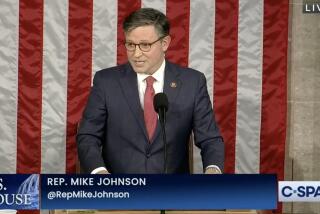Medicare financial outlook improves, but problems still loom
- Share via
WASHINGTON — The federal government projected Friday that Medicare’s main trust fund would not run in the red until 2026, two years later than projected last year, in part because of slower growth in healthcare costs.
Prospects for the Social Security retirement program, meanwhile, remain largely unchanged from last year. The program’s main trust fund, which provides assistance to about 46 million retirees and their relatives, will be unable to pay full benefits starting in 2035, according to an annual report from the board of trustees that oversees the nation’s major entitlement programs.
Social Security disability insurance faces the most pressing challenge, with its trust fund projected to slip into the red in just three years. About 11 million disabled Americans rely on the program.
The trustees, who include Obama administration officials and members of the public, reiterated warnings that Congress and the president must take steps soon to preserve the federal entitlement programs.
“Neither Medicare nor Social Security can sustain long-term programs in full under currently scheduled financing, and legislative changes are necessary to avoid disruptive consequences for beneficiaries,” they concluded. Leading Washington budget watchdogs, including the Concord Coalition and the Peterson Foundation, also urged action.
If the trust funds were exhausted, the programs would still be able to pay benefits because they would continue to collect tax revenue. But the deficits would likely force cuts in benefits.
Estimates of impending Social Security and Medicare deficits — an annual rite in Washington — have long fueled calls for major reforms to the two entitlements.
A few times over the last several decades, Democrats and Republicans have come together to prop up the programs’ finances, most recently in the late 1990s when Medicare faced the prospect of posting a deficit in just four years.
But with partisan tensions still high in Washington, prospects for any compromises appear dim.
Republican lawmakers renewed calls Friday for major changes to the entitlement programs. “These reports shouldn’t give anyone any comfort,” said Sen. Orrin G. Hatch of Utah, the senior Republican on the Senate Finance Committee. “The bottom line is that Medicare will be bankrupt in 13 years, with Social Security not far behind.”
Obama administration officials were quick to highlight Medicare’s improving finances as a validation of their strategy to build on the president’s 2010 healthcare law rather than scrap it as Republicans insist.
“Today’s trustee report confirms that the Affordable Care Act is continuing to strengthen Medicare,” said Health and Human Services Secretary Kathleen Sebelius, one of the trustees. “With smart reforms, we can secure Medicare for the future without slashing benefits.”
Medicare spending per beneficiary has slowed dramatically in recent years, fueling a growing belief among experts that changes in the nation’s healthcare system are beginning to tamp down the rise in costs.
Two weeks ago, the nonpartisan Congressional Budget Office estimated that Medicare spending over the next decade would likely be $85 billion lower than projected.
The new estimates appear to have sapped some of the energy behind the Republican campaign for a wholesale Medicare overhaul.
Led by House Budget Committee Chairman Paul D. Ryan (R-Wis.), congressional Republicans have three times in the last three years pushed legislation to largely privatize Medicare by giving beneficiaries vouchers to shop for commercial insurance, a plan they say would give seniors more choice and help bring down costs. Former Massachusetts Gov. Mitt Romney, the 2012 GOP presidential nominee, backed a similar strategy.
Depending on how they are structured, voucher programs — or “premium support,” as proponents call them — could shift thousands of dollars of medical bills onto seniors. The Congressional Budget Office has calculated this is the primary way such a strategy would save the government money.
More to Read
Sign up for Essential California
The most important California stories and recommendations in your inbox every morning.
You may occasionally receive promotional content from the Los Angeles Times.











